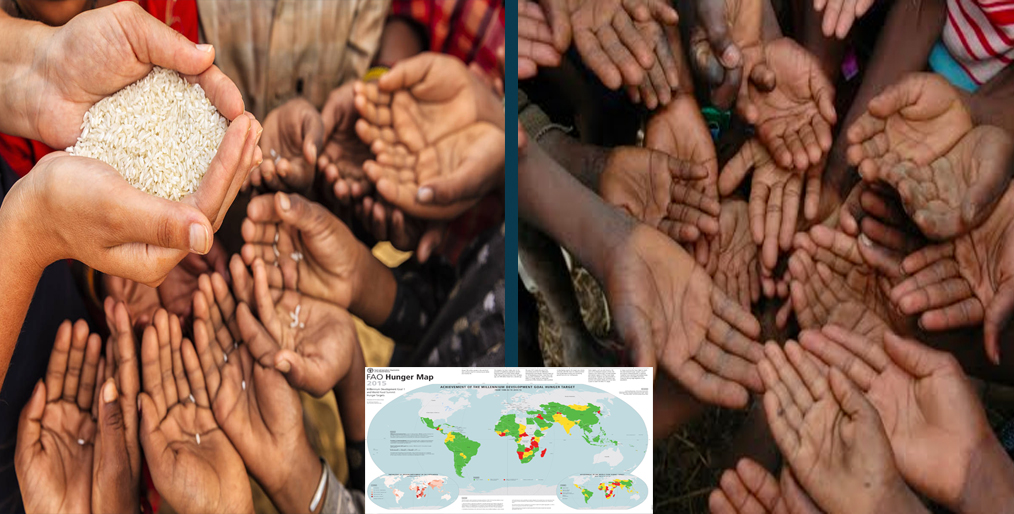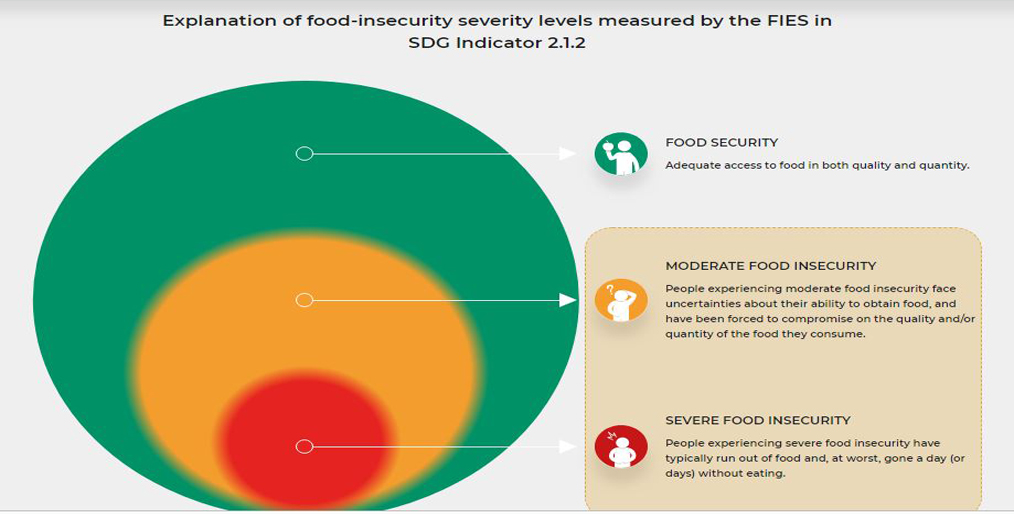
[caption id="attachment_2462" align="aligncenter" width="1014"] Picture: Collected[/caption]
The main indicator for monitoring progress on the eradication of hunger in the world reported here is the prevalence of undernourishment, or PoU (SDG Indicator 2.1.1). Beginning in 2017, the prevalence of severe food insecurity based on the Food Insecurity Experience Scale (FIES) was also included in the report as another, complementary indicator of hunger using a different approach.
This year’s report now takes a step forward by also including, for the first time, estimates of the prevalence of moderate or severe food insecurity based on the FIES (SDG Indicator 2.1.2). This indicator provides a perspective on global food insecurity relevant for all countries of the world: one that looks beyond hunger towards the goal of ensuring access to nutritious and sufficient food for all. As estimates of SDG Indicator 2.1.2 refer to the total number of people suffering from food insecurity, including at moderate levels, it should come as no surprise that they correspond to a much higher number of people than those who suffer from hunger.
Monitoring progress on ending hunger and ensuring access to food for all
The Sustainable Development Goals (SDG) framework includes two indicators for monitoring SDG Target 2.1: the prevalence of undernourishment (SDG Indicator 2.1.1) and prevalence of moderate or severe food insecurity based on the Food Insecurity Experience Scale – FIES (SDG Indicator 2.1.2) .1
[caption id="attachment_2463" align="aligncenter" width="1014"]
Picture: Collected[/caption]
The main indicator for monitoring progress on the eradication of hunger in the world reported here is the prevalence of undernourishment, or PoU (SDG Indicator 2.1.1). Beginning in 2017, the prevalence of severe food insecurity based on the Food Insecurity Experience Scale (FIES) was also included in the report as another, complementary indicator of hunger using a different approach.
This year’s report now takes a step forward by also including, for the first time, estimates of the prevalence of moderate or severe food insecurity based on the FIES (SDG Indicator 2.1.2). This indicator provides a perspective on global food insecurity relevant for all countries of the world: one that looks beyond hunger towards the goal of ensuring access to nutritious and sufficient food for all. As estimates of SDG Indicator 2.1.2 refer to the total number of people suffering from food insecurity, including at moderate levels, it should come as no surprise that they correspond to a much higher number of people than those who suffer from hunger.
Monitoring progress on ending hunger and ensuring access to food for all
The Sustainable Development Goals (SDG) framework includes two indicators for monitoring SDG Target 2.1: the prevalence of undernourishment (SDG Indicator 2.1.1) and prevalence of moderate or severe food insecurity based on the Food Insecurity Experience Scale – FIES (SDG Indicator 2.1.2) .1
[caption id="attachment_2463" align="aligncenter" width="1014"] Picture: Collected[/caption]
People experiencing moderate food insecurity face uncertainties about their ability to obtain food and have been forced to reduce, at times during the year, the quality and/or quantity of food they consume due to lack of money or other resources. It thus refers to a lack of consistent access to food, which diminishes dietary quality, disrupts normal eating patterns, and can have negative consequences for nutrition, health and well-being. People facing severe food insecurity, on the other hand, have likely run out of food, experienced hunger and, at the most extreme, gone for days without eating, putting their health and well-being at grave risk. Read more..
Source: FAO
SZK
Picture: Collected[/caption]
People experiencing moderate food insecurity face uncertainties about their ability to obtain food and have been forced to reduce, at times during the year, the quality and/or quantity of food they consume due to lack of money or other resources. It thus refers to a lack of consistent access to food, which diminishes dietary quality, disrupts normal eating patterns, and can have negative consequences for nutrition, health and well-being. People facing severe food insecurity, on the other hand, have likely run out of food, experienced hunger and, at the most extreme, gone for days without eating, putting their health and well-being at grave risk. Read more..
Source: FAO
SZK
Comment Now